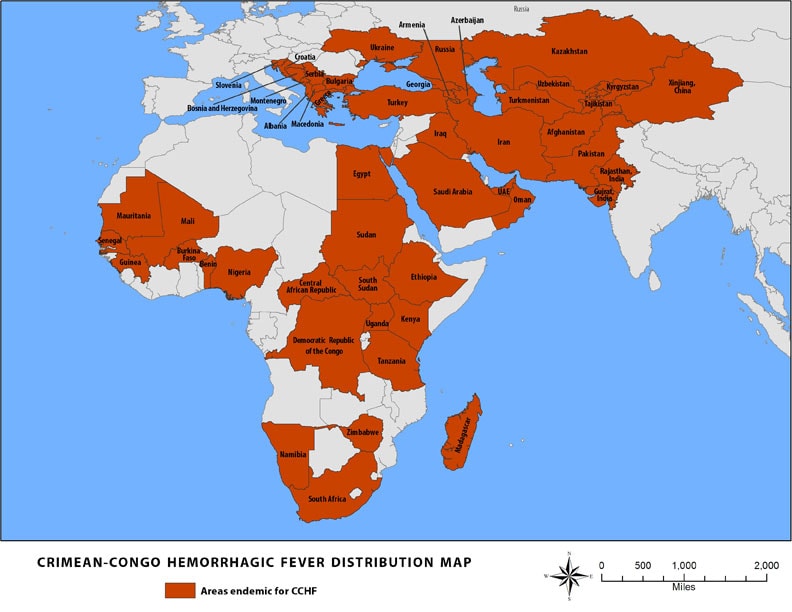Nairovirus is a tick-borne virus (ticks of Hyalommagenus genus) and has become endemic in Africa, the Middle East, Asia and Eastern Europe - however, infection in Western Europe has remained uncommon. This latest case has raised concerns about a possible spread of nairovirus to Western Europe.
The primary way that the tick (and nairovirus) spreads is by exploiting the migration patterns of birds, another animal on which the ticks prey.
The signs and symptoms of CCHF (CDC): "headache, high fever, back pain, joint pain, stomach pain, and vomiting. Red eyes, a flushed face, a red throat, and petechiae (red spots) on the palate are common. Symptoms may also include jaundice, and in severe cases, changes in mood and sensory perception." The fatality rate ranges between 9-50%.

The signs and symptoms of CCHF (CDC): "headache, high fever, back pain, joint pain, stomach pain, and vomiting. Red eyes, a flushed face, a red throat, and petechiae (red spots) on the palate are common. Symptoms may also include jaundice, and in severe cases, changes in mood and sensory perception." The fatality rate ranges between 9-50%.

Outbreak distribution map. CDC.
Carolyn Oliver
Carolyn Oliver
Sources:
1. CDC. https://www.cdc.gov/vhf/crimean-congo/index.html
2. http://www.healthmap.org/site/diseasedaily/article/crimean-congo-hemorrhagic-fever-spain-new-emerging-disease-western-europe-92716
No comments:
Post a Comment